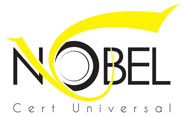This International Standard has been drawn up with the objective of promoting confidence in bodies performing inspection.
Inspection bodies carry out assessments on behalf of private clients, their parent organizations, or authorities, with the objective of providing information about the conformity of inspected items with regulations, standards, specifications, inspection schemes or contracts. Inspection parameters include matters of quantity, quality, safety, fitness for purpose, and continued safety compliance of installations or systems in operation. The general requirements with which these bodies are required to comply in order that their services are accepted by clients and by supervisory authorities are harmonized in this International Standard.
This International Standard covers the activities of inspection bodies whose work can include the examination of materials, products, installations, plants, processes, work procedures or services, and the determination of their conformity with requirements and the subsequent reporting of results of these activities to clients and, when required, to authorities. Inspection can concern all stages during the lifetime of these items, including the design stage. Such work normally requires the exercise of professional judgement in performing inspection, in particular when assessing conformity with general requirements.
This International Standard can be used as a requirements document for accreditation or peer assessment or other assessments.
This set of requirements can be interpreted when applied to particular sectors.
Inspection activities can overlap with testing and certification activities where these activities have common characteristics. However, an important difference is that many types of inspection involve professional judgement to determine acceptability against general requirements, for which reason the inspection body needs the necessary competence to perform the task.
Inspection can be an activity embedded in a larger process. For example, inspection can be used as a surveillance activity in a product certification scheme. Inspection can be an activity that precedes maintenance or simply provides information about the inspected item with no determination of conformity with requirements. In such cases, further interpretation might be needed.

